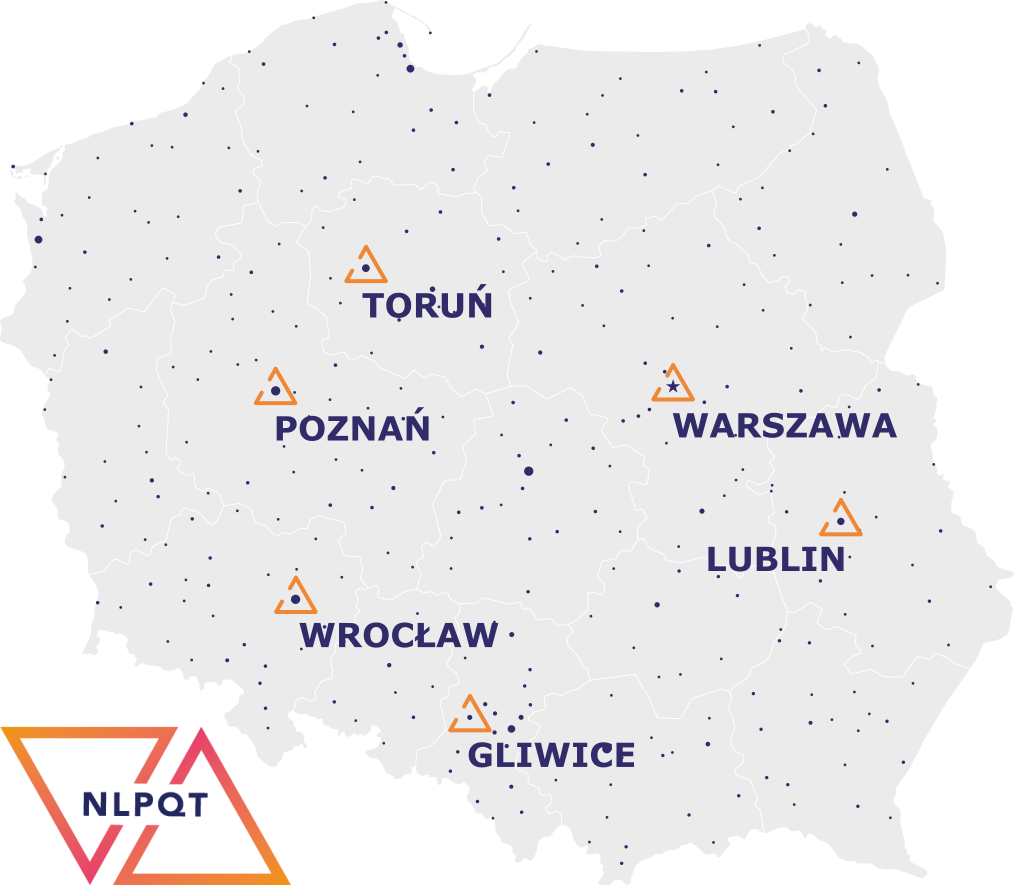The world optoelectronic organization SPIE has funded 3 Awards for Students, including for PhD students, presenting at the IOS'2025 Conference in person the results of scientific research obtained with their own participation.
The amount of each Award is 1 thousand PLN.
The Committee appointed by the IOS’2025 Scientific Committee will decide which presentations will be distinguished with the SPIE Award.
The IOS'2025 Organizers strongly encourage all students to submit their presentations to the SPIE Award.
Publications of works from the IOS'2022 Conference
Dear Participants of the IOS'2022 Conference
Authors of works that were presented at the IOS'2022 Conference in the form of oral and poster presentations may apply for their publication in the online journal Photonics Letters of Poland (PLP) on preferential terms.
Photonics Letters of Poland is a journal indexed by all bibliometric databases, including Web of Science (WoS) and SCOPUS. According to the Journal Scoring List of the Ministry of Science and Education, papers published in the PLP Journal are assessed at 40pt.
Papers qualified by the IOS'2022 Scientific Committee of the Conference will be published in No 2 in 2022 of the PLP journal.
Papers in PLP should be submitted via the website of this Journal (https://photonics.pl//PLP/index.php/letters).
The form of the manuscript preparation (and other information concerning the publication processes) are available on the above website.
The works should be submitted by the deadline of May 15, 2022.
Yours faithfully

Tadeusz Pustelny
The project QUNNA „ QUantum-effect-based Nanosensing and imaging: Novel glass-diamond photonic approach for the next generation biodiagnostic Applications” has been awarded 4.3 mln EUR funding in the prestigious TEAM-NET call organized by the Foundation for Polish Science (2nd rank on the list). The project is carried out by the consortium of University of Warsaw, Jagiellonian University of Cracow, Gdańsk University of Technology and Institute of Biotechnology and Molecular Medicine (IBMM).
The aim of the project is to apply phenomena of quantum physics for deployment of nanodiamond based technologies into innovative sensors that could be utilized in optical and magnetic research, electronics and medical diagnostics.
Within the 4 year-long project, scientists will explore new materials, components and photonic systems displaying specific magnetic and optical properties. The resulting optoelectronic solutions will be introduced to the market in order to advance diagnostics of neurodegenerative diseases and cancer, among others.
The aim of the first edition of the TEAM-NET program organized by the Foundation for Polish Science is to enable far-reaching projects carried out by a network of cooperating research teams managed by outstanding scientists.
The Project website: www.qunna.pl
In the period of February 27 - March 3, 2023, another Integrated Optics - Sensors, Sensing Structures and Methods IOS '2023 Conference was held at the META Hotel in Szczyrk (Poland).
The Conference takes place in a form with the direct participation of the Participants.
The Conference aroused great interest in the Polish and international photonic community.
About 130 participants took part in the conference. Above 100 scientific work were presented.
In the common opinion of the Participants, the scientific level of the Conference was high.
Selected works have been recommended by the Scientific Committee of IOS'2023 for publication in the Photonics Letters of Poland journal.
The Organizers of IOS'2023 would like to thank all Conference Participants for their activity.
The Scientific Committee of IOS'2023 congratulates the Authors of the presented at the Conference works their high scientific levels.
Yours faithfully

On behalf of the Scientific and Organizational Committees
Tadeusz Pustelny

The National Laboratory for Photonics and Quantum Technologies - NLPQT - is a nationwide investment project carried out by a consortium of 7 scientific units led by the University of Warsaw. The main purpose of the project is to create new research infrastructure in three areas:

- Generation and Distribution of Reference Optical Carrier
The main goal of the National System for Generation and Distribution of the Reference Optical Carrier is to construct an ultra-stable laser system that can be linked to an optical atomic clock, along with a distribution network using optical fibers. The optical reference signal with low phase noise will be distributed from Toruń to all of the participants of the NLPQT consortium where it will be available to both interested researchers and industry partners.
- Photonic Technologies
Another aim of the NLPQT project is to build a network of research stations which will either extend the existing or provide completely new research opportunities. The new equipment will be used in a wide variety of applications such as spectroscopic studies of materials (e.g. the analysis of trace air pollutants or characterization of new materials for photovoltaics and medicine), fabrication of specialized optical fibers, development of nano- and microstructures for optoelectronic and medical applications, design, production and characterization of lighting systems, two- and three-dimensional imaging of biological objects and many others.
- Quantum Technologies
In the area of quantum technologies, the NLPQT project is focused on the development of a country-wide infrastructure enabling practical utilization of properties of individual quantum objects. A particular emphasis is put on the possibility of using single photons in quantum communication, which will enable both research and development work on quantum key distribution (QKD) as well as integration of such solutions with other mechanisms used to secure data transmitted over existing IT and telecommunication systems. Furthermore, test workstations utilizing real-life applications of such quantum objects as single electrons, quantum dots, or atoms will also be established.
The infrastructure built within the framework of the NLPQT project will not only serve the scientists directly involved in the project, but will also be available to other researchers and industry partners. For more information visit the website of the Project at http://nlpqt.fuw.edu.pl.

